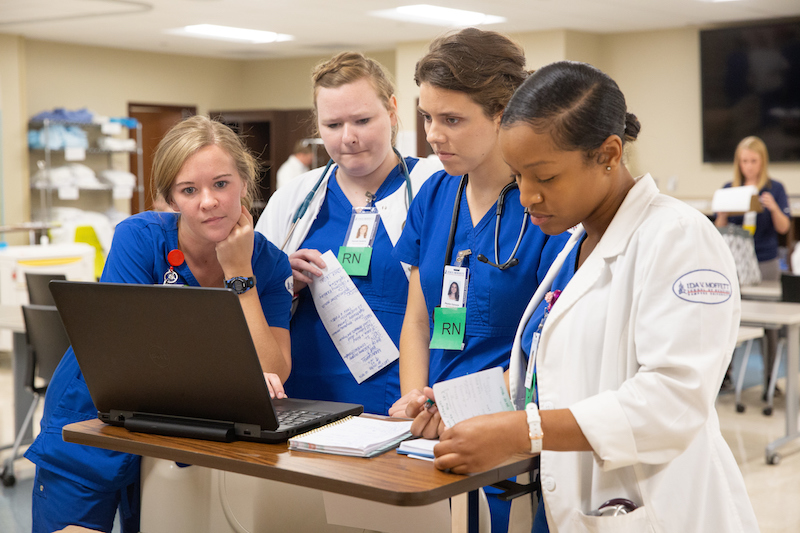
In the hallway of Samford University’s Experiential Learning and Simulation Center, a standardized patient stumbled to the ground to simulate a patient experiencing cardiac arrest. The Doctor of Physical Therapy student who was with him jumped into action and called a code. Within seconds, an interprofessional team of students gathered.
Undergraduate nursing students took over CPR, Doctor of Pharmacy students prepared the needed medications, and Master of Social Work students attended to the patient’s family. This is just one scenario that students were able to experience together during the College of Health Sciences’ annual Acute Care Simulation.
This large-scale event is designed to build students’ knowledge and skills to not only care for their patients but to also work together as an interprofessional health care team. Over the course of two days, roughly 250 students, representing programs in each of the college’s four schools, participated.
“With our Acute Care Simulation, we convert our simulation floor into a hospital with units representing emergency, medical-surgical, intensive care and more,” said Jill Pence, executive director of the Experiential Learning and Simulation Center. “While we hold similar simulations throughout the year, they do not compare to the size and scale of the Acute Care Simulation. Our goal is to provide a truer reality of what it would be like to work in a clinical setting like a hospital—from the types of patients to the interprofessional health care team.”
The simulation used a mix of high-fidelity manikins and standardized patients, or actors, who serve as patients and family members.
“I found this simulation so beneficial,” said Sara Smeltzer, a second-year Doctor of Physical Therapy student. “How are we supposed to know how to work with other health care professionals if we don’t practice. I appreciate Samford giving us this chance to collaborate with others' professions—to not only get a sense of what they do, but to also showcase what we do.”
For the first time, students were able to utilize an electronic health records system created for health care simulations. Computers and tablets replaced physical patient charts, providing another realistic aspect to the simulation.
“Our ultimate goal is to equip these students with the confidence that comes with experience,” Pence said. “Students learn from their mistakes here so when they graduate, they are beyond practice ready.”
